The week at a glance
- Snowy Owl still on Scilly
- Possible Eastern Bonelli's Warbler in Cornwall
- Further Iberian Chiffchaffs appear
- Kentish Plover delights in Greater Manchester
- Early Broad-billed Sandpiper in Gwent
- Belated news of Bufflehead in Argyll
- Moustached Warbler in the Netherlands
- African Grey Woodpecker added to Western Palearctic list
For the second half of April, this week really was a bitter affair. After a cool weekend, things took a turn for the worse on Monday as chilling northerly winds pegged temperatures well down into single figures and even delivered flurries of snow as far south as Kent by Tuesday.
So, not classic spring weather — but it's hard to suppress the surge of northbound birds during the peak weeks of migration, even when the conditions are, shall we say, 'testing'. As a result the birding wasn't all that bad out there, with a handful of new rarities. Good movement of waders and Arctic Terns over the weekend ensured there was at least something to look at for those birders happy to wrap up warm and brave the conditions. That said, the only mega-rarity reported this week was the long-staying Hudsonian Whimbrel still in the Marazion area to 23rd at least.
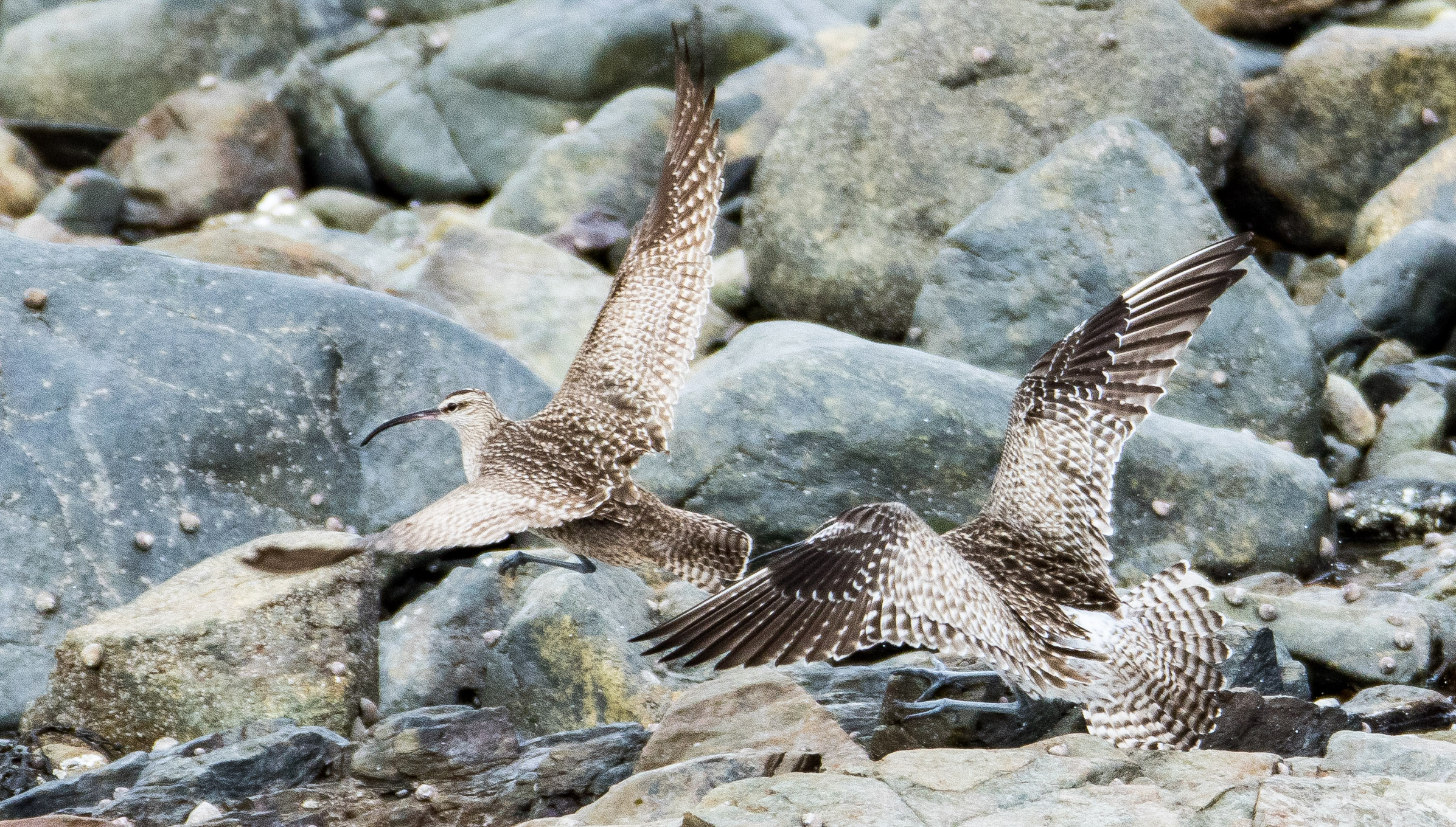
Hudsonian Whimbrel (with Whimbrel), Perranuthnoe, Cornwall (Photo: Dr George Kinsman)
A further two new Iberian Chiffchaffs were discovered this week, both in Kent and perhaps feasibly relating to the same individual. A male singing at Reculver on 20th soon disappeared yet the bird in Northdown Park, Margate, from 23rd proved altogether more cooperative, singing and showing well there until 26th — despite the biting wind whipping in off the North Sea. Elsewhere the Telford bird was still singing on 25th at least and the Scilly male continued to advertise itself on Tresco.
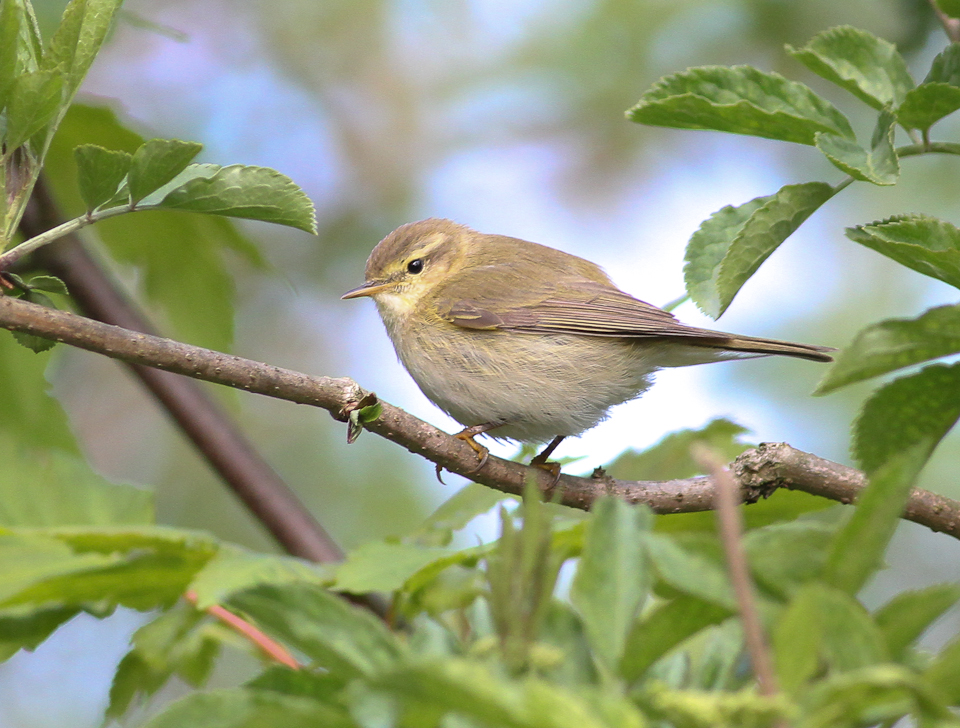
Iberian Chiffchaff, Northdown Park, Margate, Kent (Photo: Barry Matlock)
In fact the latter chiffchaff proved one half of an unlikely double-act offering themselves up to local and visiting birders alike this week. Has it ever been possible to see Snowy Owl and Iberian Chiffchaff on the same day? Probably not — and where more apt than Scilly, the traditional meeting-place of lost waifs from all corners of the globe, for such a thing to happen? The owl, after having arrived on Bryher last week, spent much of the week on Shipman Head Down — though it did revisit Tresco for a short while on 25th.

Snowy Owl, St Mary's, Isles of Scilly (Photo: Martin Goodey)
The first Spotted Flycatcher of the spring was at Chew Valley Lake, Somerset, on 20th and was followed by a handful of other records from southern England over the following days. A light scattering of Black Terns included eight past Portland, Dorset, on 23rd. As already alluded to, Arctic Terns were on the move in numbers with an apparent peak on Sunday when 63 were at Staines Reservoirs, Surrey, and 25 were at Weir Wood Reservoir, E Sussex.
Also much more prominent this week were Dotterel. Two were at Flamborough Head, E Yorks, on 21st, with five at the traditional location of Pendle Hill, Lancs, and three at Helvellyn, Cumbria, the same day. A popular male was near Slack, Derbys, on 22–23rd, while two were at Carnbee, Fife, on 22nd. Records followed from Cumbria and Carmarthenshire on 23rd and South Yorkshire on 24th.

Dotterel, Garreg Lwyd, Carmarthen (Photo: Colin Richards)
Potentially the rarest bird of the week was the bonelli's warbler trapped at Nanjizal, Cornwall, on 23rd — though not heard to call, biometrics seemed to suggest it was an Eastern. Frustratingly it wasn't seen again after release. From a similar area came a stunning male Eastern Subalpine Warbler on Skokholm, Pembrokeshire, on 24th. Last week's Savi's Warbler was still singing at Minsmere on 22nd.
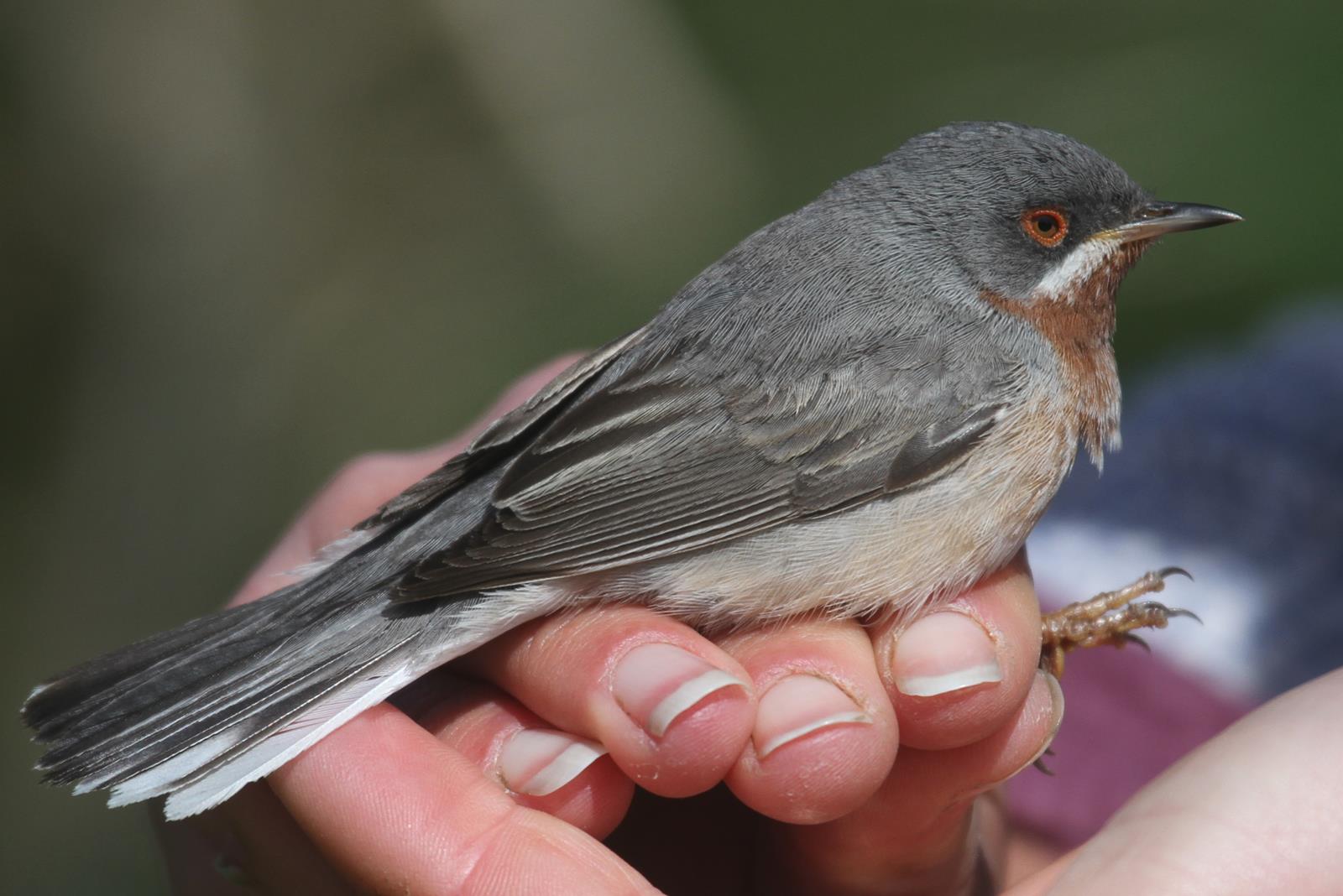
Eastern Subalpine Warbler, Skokholm, Pembrokeshire (Photo: Skokholm Warden)
An Olive-backed Pipit was at Seacliff, Lothian, for a few hours in the afternoon of 24th; another possible was seen briefly at Filey, N Yorks, later in the day. An early Common Rosefinch was at Kilnsea, E Yorks, on 24th. The most popular of the week's dozen Eurasian Hoopoes was a bird at Romsley, Worcs, from 21st. Both Cornwall and Scilly claimed three apiece, while Irish records came from Counties Kerry and Wexford. Five Wrynecks included a confiding bird in Cley, Norfolk, from 24th that was joined by a second on 26th, in addition to brief birds on Scilly and in Buckinghamshire and Dorset. A European Serin again flew over Selsey Bill, W Sussex, twice on 21st.

Olive-backed Pipit, Seacliff, Lothian (Photo: Ian Andrews)

Hoopoe, Romsley, Worcestershire (Photo: Chris Cook)

Wryneck, Cley next the Sea, Norfolk (Photo: Jake Gearty)
A Purple Heron at Linford Nature Reserve, Bucks, on 20th wasn't reported until two days later. One at South Huish Marsh, Devon, on 23rd was joined by a second individual the following day. Five Cattle Egrets were logged including a new bird at Carbarns Pool, Clyde, for a matter of minutes in the late morning on Sunday. Up to eight Glossy Ibis were seen nationwide; one at Charmouth, Dorset, on 25th was new.
Green colour-ringed White Storks were in Suffolk and Bedfordshire on 20th (possibly the same bird doing the rounds); records from Northamptonshire, Cambridgeshire and Norfolk may also have concerned this bird. Two were briefly at Hightown, Lancs, on 21st and one was near Southfield Reservoir, E Yorks, on 24–25th. On 26th fly-overs were logged at Dymchurch, Kent, and Bradwell-on-Sea, Essex.
White-billed Divers continued off Barra, Lewis (2), South Ronaldsay and Moray. A new bird was off Yell, Shetland, on 22nd, while 7–10 distantly off Portsoy on 21st signalled that the build-up at this hot-spot is well underway — all we need now is some pleasant weather so that boat trips can take place! The drake King Eider remained in Highland and the female in Fife; the only Surf Scoter reported this week was the young drake still off Filey, N Yorks.
Belated news concerned a smart drake Bufflehead photographed at Oban, Argyll, on 16th (photo here). The Lesser Scaup remained in Glamorgan and a drake Ring-necked Duck hung on in Co Donegal. Two drake American Wigeon were found: at White's Marsh, Co Cork, on 20th and Port Allen, Perthshire, on 21st. Green-winged Teal were in Cumbria and Lothian. Black Brants were noted in Kent, Essex and East Yorkshire, while two Richardson's Cackling Geese were again noted on Islay, Argyll, on 19th.
Though a fine pair of Kentish Plovers on the beach at Marazion, Cornwall, from 22–24th was notable, their presence was eclipsed by the arrival of a delightfully confiding individual at Audenshaw Reservoirs, Gtr Man, on 25th. Inland records such as this rarely stay long and so it was even more of a surprise that it was still showing well the following day. This is the first county record since 1980.

Kentish Plovers, Marazion, Cornwall (Photo: Alex McKechnie)

Kentish Plover, Audenshaw Reservoirs (Permit only), Greater Manchester (Photo: John Tymon)
The Broad-billed Sandpiper found at Newport Wetlands, Gwent, on 22nd is, aside one in Norfolk on the freakish date of 8 March 1991, the earliest spring occurrence on record. Lingering until the following day, it becomes the fourth county record. A female Grey Phalarope spent the day at Staines Reservoirs, Surrey, on 24th. While not in full summer regalia it was nevertheless well on its way to obtaining its brick-red breeding plumage, and was a fine (if a little distant) sight on a largely grey day. Both Northumberland and Hampshire continued to play host to their Long-billed Dowitchers, while a Pectoral Sandpiper touched down briefly at North Cave Wetlands, E Yorks, on 23rd. A pair of Black-winged Stilts spent the day at Old Wolverton, Bucks, on 24th but had moved on by the following morning.

Broad-billed Sandpiper (with Dunlin), Newport Wetlands, Gwent (Photo: Mark Dowie)

Black-winged Stilt, Old Wolverton, Buckinghamshire (Photo: Lucy Flower)
The first-winter American Herring Gull was again at Drift Reservoir, Cornwall, on 21st and the third-winter was near St Just that day; the first-winter also remained on Barra to 22nd. An adult Bonaparte's Gull was at Tacumshin, Co Wexford, on 23rd, and the only Ring-billed Gull record concerned a fly-through adult at Belfast Lough, Co Antrim, on 21st.
A white-morph Gyr Falcon was reported at Borve, Lewis, on 24th, with a Black Kite on the same island at Liurbost on 26th. Further Black Kite records came from Moniaive, Dumfries & Galloway, on 21st and Hastings, E Sussex, on 23rd.
Two Richard's Pipits continued to frequent fields at Flamborough Head, E Yorks, to 23rd but Dorset's Pallas's Warbler appears to have moved on. A Yellow-browed Warbler lingered at Marazion, Cornwall, with a migrant found new in at Long Melford, Suffolk, on 24th. The Lady Amherst's Pheasant continues its lonely vigil at Millbrook Proving Ground, Beds, and was seen regularly throughout the week.
Western Palearctic news
Exciting news concerned the addition of African Grey Woodpecker to the Western Palearctic list based on a bird seen just within the region's boundary in Mauritania on 11 April (details here). At least four Golden Nightjars and a Sudan Golden Sparrow were logged along the Aousserd Road, Western Sahara, on 20th. Both Black Heron and Intermediate Egret continued on Santiago, Cape Verde, while two Golden Orioles on Sal appear to represent the first record for the archipelago. An adult Red-footed Booby was photographed on Raso in recent days.
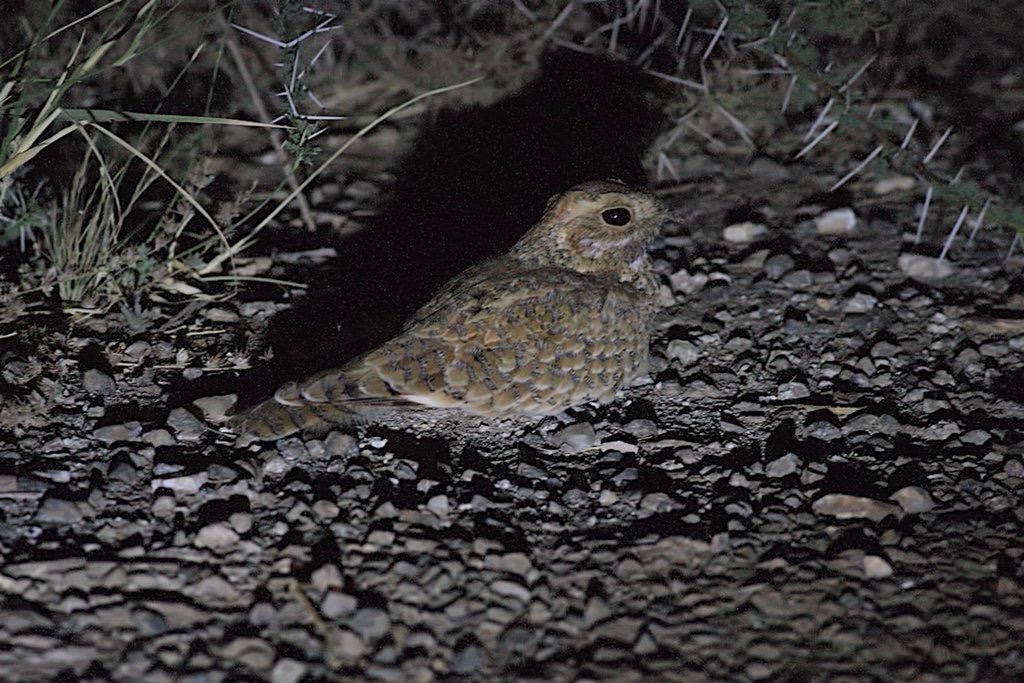
Golden Nightjar, Western Sahara (Photo: Peter Stronach)
The Black-browed Albatross was seen again three times this week — not on its favoured Heligoland, but around Sylt, the largest of the North Frisian Islands. A Moustached Warbler was also recorded in Germany but more significant was the arrival of the first for the Netherlands: trapped and ringed in a reedbed near Nijmegen on 21st, it has held territory there ever since (great photos on the Dutch Birding website). Another German record concerned a Sociable Lapwing in Niedersachsen on 21–22nd. News from north-west France concerned the returning adult Elegant Tern again around Barbâtre, Vendée, on 20th.
An American Robin was at Sete Cidades, São Miguel, Azores, on 24th and the Double-crested Cormorant was still at nearby Mosteiros. A male Oriental Honey Buzzard flew over Mitspe Shalem, Israel, on 25th. Belated news concerned a Striped Crake photographed at Jahra Pools, Kuwait, on 1 January 2015, but only identified this week. This unsurprisingly represents a national first.
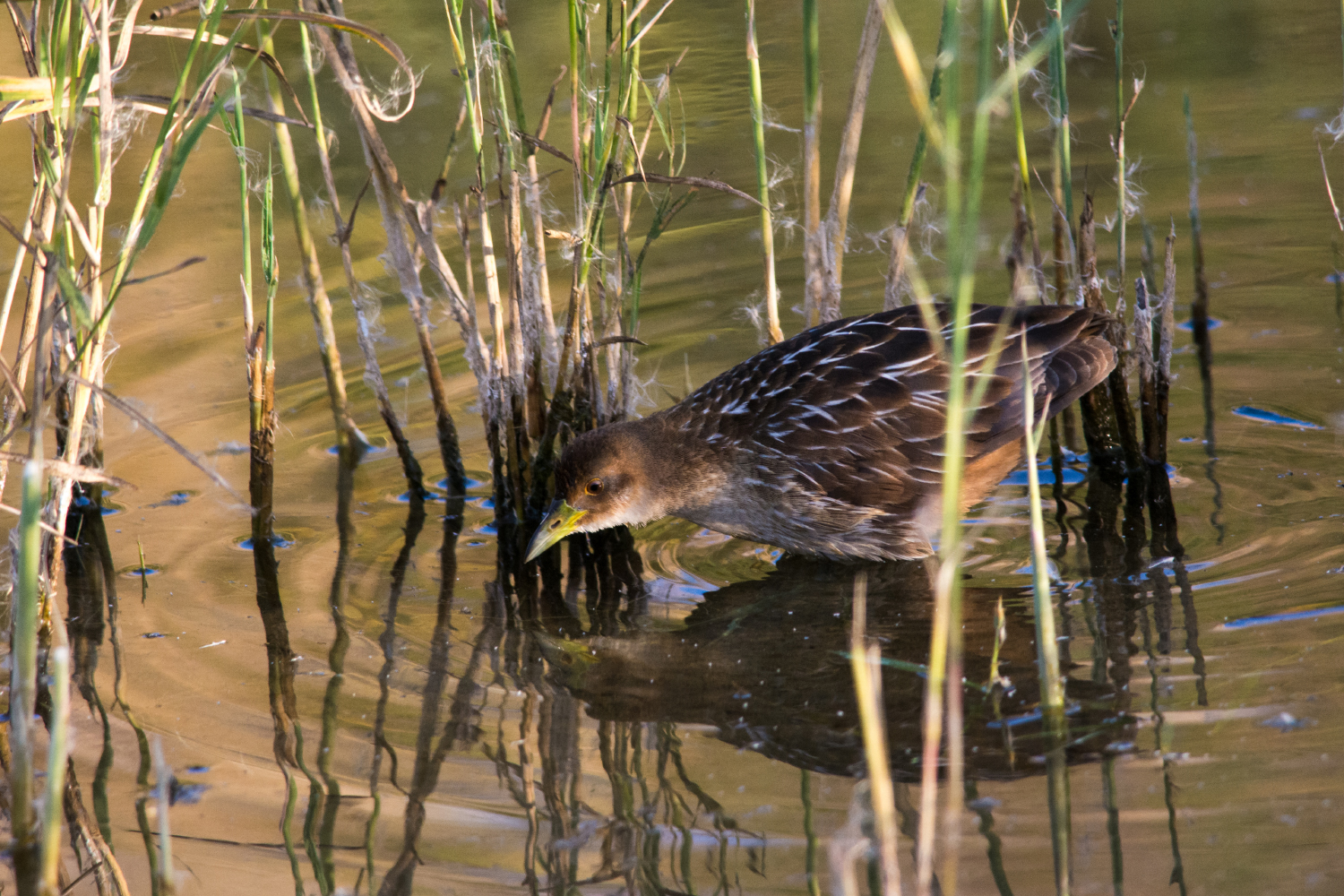
Striped Crake, Kuwait (Photo: Ammar Aljeraiwi)


